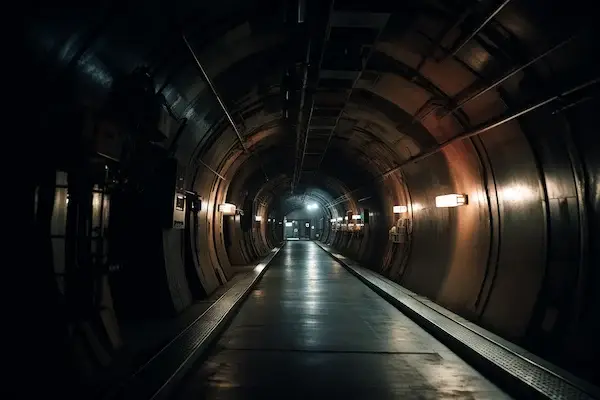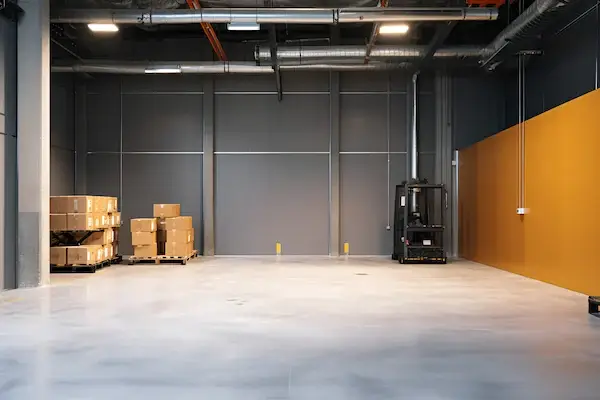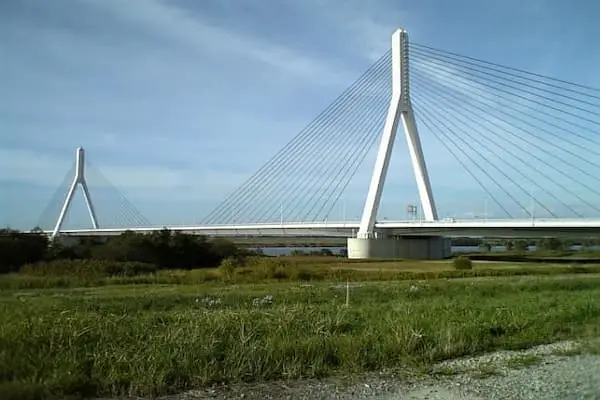
In recent years, with the rapid development of global infrastructure construction, concrete materials have been widely used in urban high-rise buildings, large-scale water conservancy projectsそして highway construction.
As the construction industry demands better performance from concrete, high-performance, high-strength, and multi-functional fiber-reinforced concrete has emerged. Polyvinyl alcohol (PVA) fibers, due to their unique material properties, have shown significant advantages in engineered cementitious composites (ECC).
What Is PVA Fiber?
PVA (Polyvinyl Alcohol) fiber is a synthetic fiber made from high-quality polyvinyl alcohol, which has a high degree of polymerization and is processed by specific technology.
Its key characteristics include high strength, excellent resistance to acids, alkalis, and weatheringそして strong bonding with cement and other base materials. Due to these properties, PVA fiber is widely used to enhance the performance of cement and concrete.
Research has shown that adding PVA fiber to concrete can significantly improve its early-stage crack resistance, freeze-thaw durability, water penetration resistance, sulfate erosion resistanceそして high-temperature explosion-proof performance.
What Are the Properties of PVA Fiber?
High Strength
PVA fiber has better mechanical properties than other organic fibers. Its tensile strength is higher than steel, aluminum, and fiberglass. Despite being less than half the thickness of PP fibers, PVA fibers are over four times stronger. This makes them highly effective at improving the tensile strength of concrete.
High Modulus
The high elastic modulus of PVA fiber increases concrete’s stiffness, reducing deformation under load. This property helps minimize early-stage cracking, improving long-term durability.
Alkali Resistance
Unlike some synthetic fibers, PVA fibers do not degrade in a highly alkaline concrete environment. It does not react with alkaline substances in concrete, ensuring the normal hardening process remains unaffected.
Corrosion Resistance
Unlike metal reinforcements, PVA fibers do not rust or corrode, even in wet or salty conditions, resulting in a longer service life.
Eco-Friendly & Safe
PVA fiber is a non-toxic, skin-friendly material that poses no harm to humans or the environment. Unlike some synthetic fibers, it produces no harmful pollutants, making it a sustainable choice for construction and other applications.

What Is Engineered Cementitious Composites (ECC)?
Engineered Cementitious Composites (ECC) are a special kind of strong and flexible concrete mixed with tiny synthetic fibers (often made of materials like PVA or polyethylene).
Unlike regular concrete, ECC is designed to be much tougher, more durable, and able to bend without breaking easily. It’s made mainly from cement, water, fine sand, and small fibers, but sometimes includes extra additives to improve its performance.
ECC stands out because it can handle more stress and strain compared with traditional concrete. The fibers inside help it resist cracks and last longer, making it ideal for structures that need extra strength and flexibility. This advanced material is often used in buildings, bridges, and other projects where durability is key.
Advantages of PVA Fibers in ECC
Polyvinyl Alcohol Engineered Cementitious Composite (PVA-ECC) is a high-performance fiber-reinforced material that incorporates polyvinyl alcohol (PVA) fibers to significantly enhance mechanical properties. The addition of these fibers improves ductility, crack resistance, and overall durability, making PVA-ECC a versatile solution for modern construction needs.
Crack Resistance
Concrete has relatively low tensile strength, making it prone to cracking. The incorporation of PVA fibers effectively enhances tensile strength and toughness, delaying the time of concrete cracking, reducing crack width and area, and improving early-age crack resistance.
Permeability Resistance
Due to its porous structure, traditional concrete is susceptible to water and chemical penetration. PVA fibers help inhibit plastic shrinkage cracks and optimize pore structure, thereby enhancing the impermeability and durability of concretes.
Freeze-Thaw Resistance
In cold climates, repeated freeze-thaw cycles can cause concrete to deteriorate. PVA fibers reinforce the substrate, improving freeze-thaw resistance by reducing internal stress and microcrack formation.
Seismic Performance
PVA fibers can improve the stiffness and stability of concrete and increase the seismic performance of concrete.
High-Temperature Resistance
Unlike conventional cementitious composites, PVA-ECC has superior toughness and resistance to explosive spalling under high temperatures, making it a safer choice in fire-prone environments.
Environmental Sustainability
The widespread use of concrete results in massive cement consumption, a major contributor to global carbon emissions due to its energy-intensive production process.
PVA-ECC’s extended service life and reduced maintenance requirements lead to lower lifecycle energy consumption compared to traditional reinforced concrete, aligning with sustainable development goals.

Applications of PVA-ECC
Polyvinyl Alcohol Engineered Cementitious Composite (PVA-ECC) is a specific type of engineered cementitious composite that incorporates polyvinyl alcohol (PVA) fibers. These fibers enhance the mechanical properties of the composite, making it more resilient and versatile. Here are some common applications of PVA-ECC:
1. Structural Elements
PVA-ECC can be used in structural components such as beams, columns, and slabs, where enhanced ductility and crack resistance are critical. Its ability to withstand tensile forces makes it suitable for load-bearing applications.
2. Pavements and Overlays
PVA-ECC is ideal for use in pavements and surface overlays due to its high durability and resistance to cracking. It can improve the lifespan of roadways and airport runways, reducing maintenance costs.
3. Seismic Applications
In earthquake-prone areas, PVA-ECC can be employed in buildings and bridges to provide better performance under dynamic loading. Its ductility helps structures absorb and dissipate energy during seismic events.
4. Repair and Rehabilitation
PVA-ECC is effective for repairing and rehabilitating existing concrete structures. Its bonding properties allow it to adhere well to old concrete, and its crack resistance enhances the longevity of repairs.
5. Precast Concrete Products
PVA-ECC can be utilized in the production of precast concrete components, such as panels and blocks. Its properties allow for thinner sections, which can reduce material usage while maintaining strength.
6. Waterproofing
Due to its low permeability and crack control features, PVA-ECC can be used in applications where moisture resistance is essential, such as in water tanks, tunnelsそして underground structures.
7. Infrastructure Projects
It is suitable for various infrastructure applications, including bridges, retaining walls, and other civil engineering structures, thanks to its improved durability and resistance to environmental factors.
Overall, PVA-ECC is a versatile material that combines the benefits of engineered composites with the unique properties of PVA fibers, making it suitable for a wide range of demanding applications in construction and civil engineering.
Practical application examples of PVA-ECC

This image is from Wikipedia
1. Mihara Bridge
The Mihara Bridge in Hokkaido, Japan, was built using Engineered Cementitious Composite (ECC) for its roadbed. Thanks to ECC’s exceptional qualities, the project required 40% less material compared to conventional construction methods.
2. Interstate 94
In 2005, a 225 mm thick ECC slab was installed on Interstate Highway #94 in Michigan, USA. The project required around 30 m³ of ECC material. Thanks to ECC’s enhanced performance, this slab used less material compared to a traditional concrete slab designed for the same purpose.
3. Glorio Roppongi
について Glorio Roppongi high-rise apartment in Tokyo, Japan—a 95-meter-tall building—incorporated 54 ECC coupling beams to enhance earthquake resistance. These beams were chosen over conventional concrete due to ECC’s superior damage tolerance, energy absorption, and ductility, which help protect the structure during seismic events.
Final Words
PVA fibers used in ECC greatly improve the toughness, durability, and earthquake resistance of cement-based materials. They have shown great potential in bridges, buildings, and repair projects. Although PVA-ECC is currently expensive, advances in technology and large-scale production could make it a key high-performance building material in the future. Future research should focus on reducing costs, improving long-term durability, and promoting eco-friendly production to encourage wider use.
FAQs
What is PVA fiber used for in ECC?
PVA fibers are added to concrete to make it tougher, more durable, and better at handling stress, such as earthquakes or heavy loads.
Is PVA-ECC safe for humans?
Yes, PVA (Polyvinyl Alcohol) is non-toxic and safe for humans. It is commonly used in food packaging, medical applications, and construction materials.
Why is PVA-ECC more expensive than regular concrete?
The cost is higher because PVA fibers and special mixing techniques are needed. However, its longer lifespan and lower repair needs can make it cost-effective over time.
Where is PVA-ECC commonly used?
It is used in bridges, buildings, road repairs, and other structures where high strength and crack resistance are important.
Can PVA-ECC replace traditional concrete?
In some cases, yes—especially where flexibility and durability are needed. However, due to cost, it is often used in critical parts of structures rather than for entire buildings.
How does PVA-ECC help the environment?
Lorem ipsum dolor sit amet, consectetur adipiscing elit. Ut elit tellus, luctus nec ullamcorper mattBecause it lasts longer and needs fewer repairs, it reduces material waste. Researchers are also working on making its production more eco-friendly.s, pulvinar dapibus leo.



